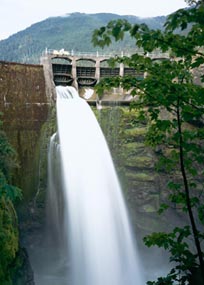Last summer, my favorite Mexican sandals got new soles and a new life thanks to a resourceful friend at Holden Village. This summer, scrambling up a rocky mountain, the sole of my hiking boot peeled away from the rest of the boot. My hiking partner and I wrapped the boot in first-aid tape so I could safely descend. (With duct tape, I could have gone on!) A resourceful Villager glued and clamped both boots with extra-strength hose glue so I could finish out the hiking season.
A couple weeks ago, my comfy left Keens shoe opened up. A shoe repair man explained why he couldn’t sew it back together, and offered to glue it for $8.50. I accepted, knowing repaired shoes would buy me time to replace them more thoughtfully and carefully.
“How long have you had these shoes?” he asked.
When I said two years, he laughed. I figured that was because, as a shoe repair guy, he kept his own shoes in such good condition that he got five or six years out of them. But no! “Two years? I get new shoes every six months!”
I always wondered how the shoe man in my old neighborhood paid his rent when he seemed to be in the business of refusing to repair shoes. And now I meet a shoe guy who doesn’t wear his shoes long enough for anything to go wrong.
Looking into this, I discovered that many shoe and podiatry web sites recommend replacing athletic shoes every 350 to 500 miles to prevent tendonitis, shin splints, and other maladies I’ve never suffered. For me, with no car, that would mean new shoes every four months.
Other websites say that shoes are the problem, and we should all be walking or running barefoot, like our correspondent Lana. (Here is a really fascinating article exploring the shoes-versus-barefeet question.) The only web site that thinks old shoes aren’t a problem is Kiwi, the shoe polish manufacturer! The more we invest in polishing and repairing our shoes, the better their bottom line.
And that’s what bugs me: the bottom line. Yes, feet should be healthy, and businesses need to survive. But how much “advice” is a thinly cloaked suggestion to spend more? An intentional campaign to goose consumption?

To win a bet, this high school student wore the same pair of shoes four years (maybe a little TOO long!) Click on the image to see what he learned about the assumptions people make based on the shoes you wear.
You know how baking soda is our idea of a green cleaning product? How we use it to clean sinks and keep refrigerators and drains smelling fresh? In an earlier part of my career, I read a marketing case study about how the geniuses at Arm & Hammer took a baking product whose market universe was limited by the annual number of cakes baked, and identified new uses that convinced millions and millions of people to literally THROW THEIR PRODUCT DOWN THE DRAIN.
It bugs me that a lot of our economy is based on throwing stuff down the drain—especially when others have so little. Especially when the environmental impact of harvesting/manufacturing the materials that go into our shoes—rubber, plastic, polyurethane, acetate, nylon, suede, and cloth—may be devastating. And instead of objecting to injustice or waste, we say oh well, what can I do, and buy another pair. After all, it’s recommended.
Anne Basye, Sustaining Simplicity






